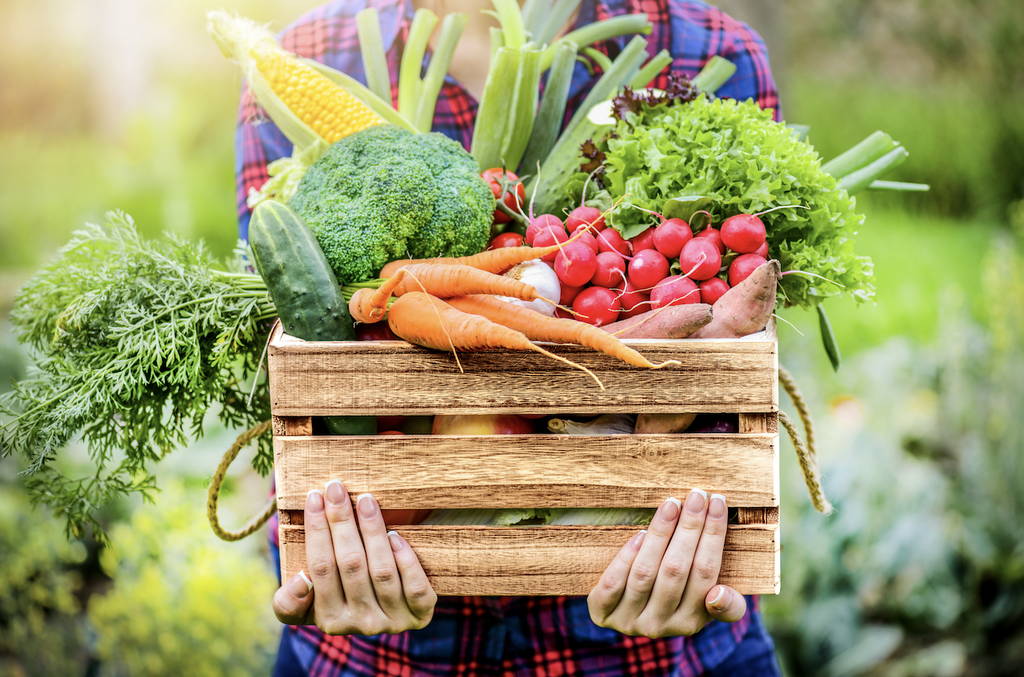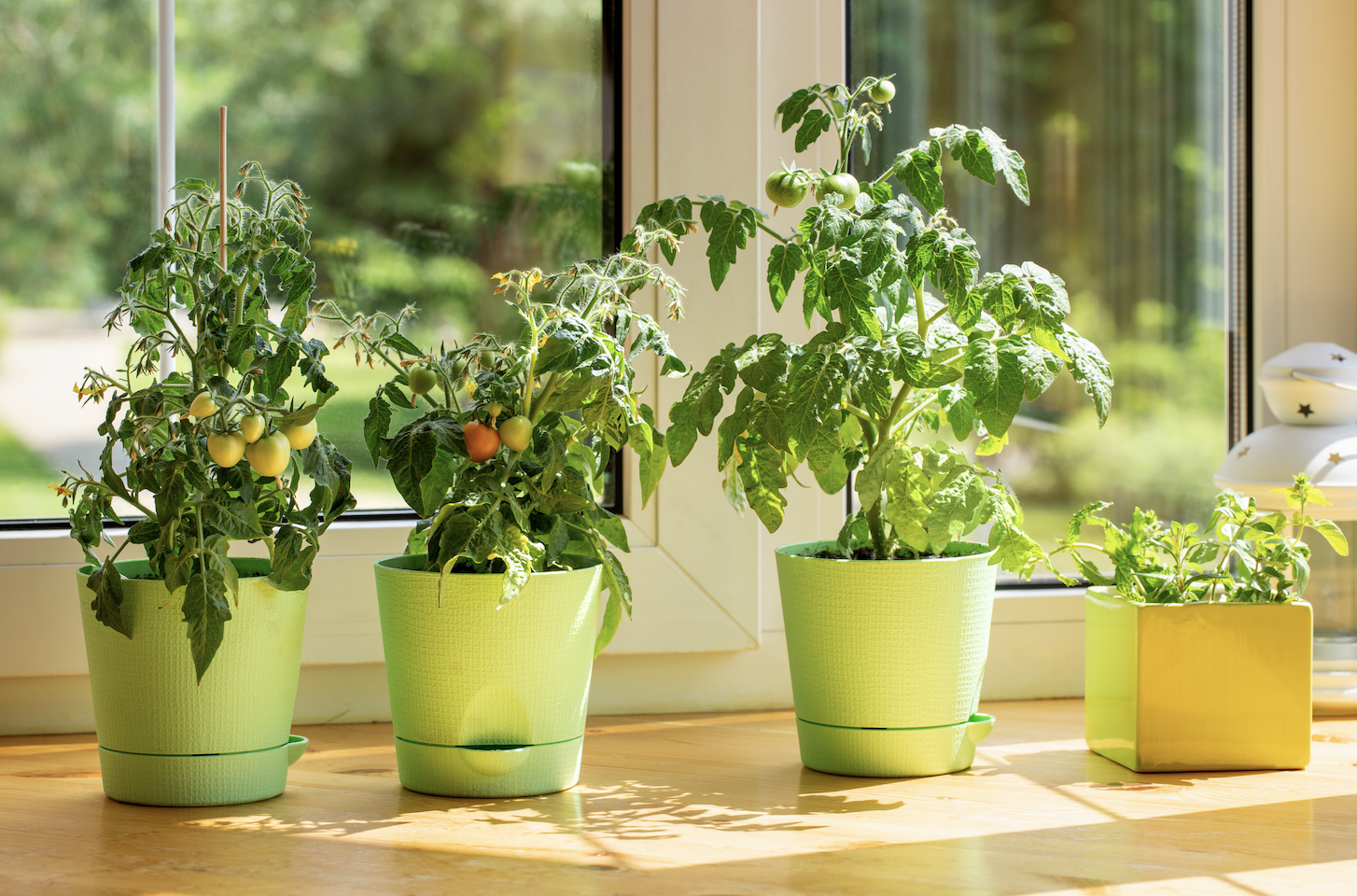How to Grow Your Own Kitchen Garden


Grow a kitchen garden this spring
As the weather gets warmer and spring turns into summer, it's always a delight to watch the trees and flowers around you bloom. It’s even more exciting when something that you’ve planted bears fruit - but, if you're living in an apartment or a house without a backyard, this may not be something you've experienced before.
Here at Farmbuy.com, we think that everyone, from crop producers who farm for a living all the way down to families in inner-city Sydney and Melbourne, should know the joys of growing and eating their own food. That's why we've put together a comprehensive guide to growing fruits and vegetables at home. You can create a kitchen garden in an area as small as a corner of your kitchen or as large as a home-made veggie patch outdoors, so read on to find a garden style that works for you!
What should you plant?
The first thing to consider is the climate and soil conditions of where you’re living. Australia consists of six climactic zones and two main seasonal patterns. Areas that have a warmer seasonal climate will be more suitable for different types of plants than a colder one.
In warmer areas – namely northern New South Wales, Queensland, the Northern Territory, and northern Westen Australia – passionfruit, avocado, banana, leeks, tomatoes, cucumber, parsley, and thyme all do really well.
In cooler areas – such as Tasmania, Victoria, southern New South Wales, the ACT and a small part of South Australia – plants like strawberries, onions, spinach, sweet corn, turnips, basil, chives and mint thrive.
However, another key consideration is how much space you have to grow everything. Whether it’s acres of land or just a small window plot, this tailored guide is intended to help you realize all your gardening dreams in a way suitable for your home.
Growing fruit and veggies in your apartment: window plots, LED growing lights, and more

Many choose to grow indoor fruits and vegetables because of a variety of reasons. Freshness, sustainability, affordability, and practicality are just a few reasons why many people switch over to home-grown produce instead of continuing to buy from their local supermarket
The first thing is to find a nice sunny spot by a window for your plants. As a general rule of thumb, vegetable need four to six hours of sunlight a day, while fruits need eight to ten. If you can’t find a nice sunny spot, your next best bet is probably to invest in grow lights, which are extremely bright LED lights that aim to give your plants a steady source of light.
Then, find a container that’s large enough for the roots of your plants to grow that also has a drainage hole at the bottom. Make sure to put a dish or tray underneath to capture whatever liquids drains out. Don’t forget to water your plants at least once a day!
The next step is to plant your vegetables using indoor potting soil, which is specially formulated to help plants grow in indoor conditions. This isn’t entirely necessary, but definitely gives your plants an advantage. A possible alternative is to buy a little bit of fertilizer as well.
Some great indoor produce to grow is:
- Lettuce – these vegetables, like other leafy greens, are easy to grow by just placing the white root of the plant in a glass jar with water.
- Radishes – soak your radish seeds in warm water for 48 hours before transferring them an inch deep into soil.
- Mint – while they require a little more attention, mint is a herb worth growing given its versatility. Plant your seeds in dry soil and water them with a spray bottle to ensure they’re not waterlogged.
- Green onions – reuse the seeds or simply replant the root of it.
- Peas – plant peas in well-draining soil, and you’ll have fully grown peas in just a couple of weeks.
Growing in small vegetable plots: expanding to the limited outdoors

If you have some room in your backyard – communal or private – it’s definitely worth planting something edible there, even if it’s just one or two plants.
Keep in mind that many vegetables take several months to crop, so some garden selections will be solely for the autumn. Alternatively, there are many vegetables and herbs that you can plant several times through the spring and summer to stagger the harvest and ensure fresh produce.
Another thing to keep in mind is that seedlings grow much faster than seeds. For example, planting lettuce means enjoying some fresh produce in a matter of weeks, while pumpkins grown from a seed take a while to grow.
Some vegetables perfect for an outdoor patch are:
- Tomatoes – if you train your tomatoes up a tall stake, these are perfect for smaller plots, especially if you plant a compact variety. They need regular watering and protection from late frosts, hot spells, and fruit flies.
- Beans – both climbing beans and bush beans are perfect for growing in a pot outdoors or on the edge of a garden bed. They’re easy to grow, crop easily, and take up little space.
- Cucumber – like tomatoes, they’re best managed by training the vines to grow up a stake or a frame from a large pot.
- Eggplant – these vegetables are a small fruit that crops quickly, making it perfect to grow in the garden bed or in a container by other plants in your garden.
- Hot peppers – these thrive in warm weather, and they’re self-pollinating, which means that all you need to do is they get enough sunlight, and they aren’t overwatered.
Growing in larger gardens: trellises and deep soil plots galore

If you have a backyard with plenty of room, the world is your gardening oyster.
You can try your hand at growing plenty of varieties of interesting plants in your garden this spring, especially if you have a trellis or some sort of climbing frame. This not only increases the space your plants have to grow, but creates a gorgeous, shaded area of your backyard that you and the family can enjoy on hot summer days.
Other plants suited for smaller places also thrive in larger plots. You can grow as many leafy greens, cucumbers, beans, and tomatoes as you want.
Some ideal produce to try your hand at this spring include:
- Sweet corn – this is a tall vegetable, so it will need lots of space in order for it to be fertilised properly. They also take a while to grow, but once they ripen, there’s nothing better to eat!
- Zucchini – as a spreading plant, these vegetables require plenty of room to grow. So long as they’re well-watered, they’ll mature quickly, and you can enjoy them in an array of dishes.
- Carrots – despite being best sewn from seeds and kept damp until germination, carrots actually thrive best in free-draining, deep soil. It’s important to not overcrowd the seedlings, as carrots develop quickly and are good for raised beds.
- Pumpkin – like zucchini, pumpkins have the power to spread across the entire garden. They can grow from seeds or seedlings, and will take a few months to develop.
Be sure to keep in mind features of your specific home garden, like how much light your plants will be getting and what sort of temperatures they'll be exposed to, before you start planting. Good luck and happy gardening!








